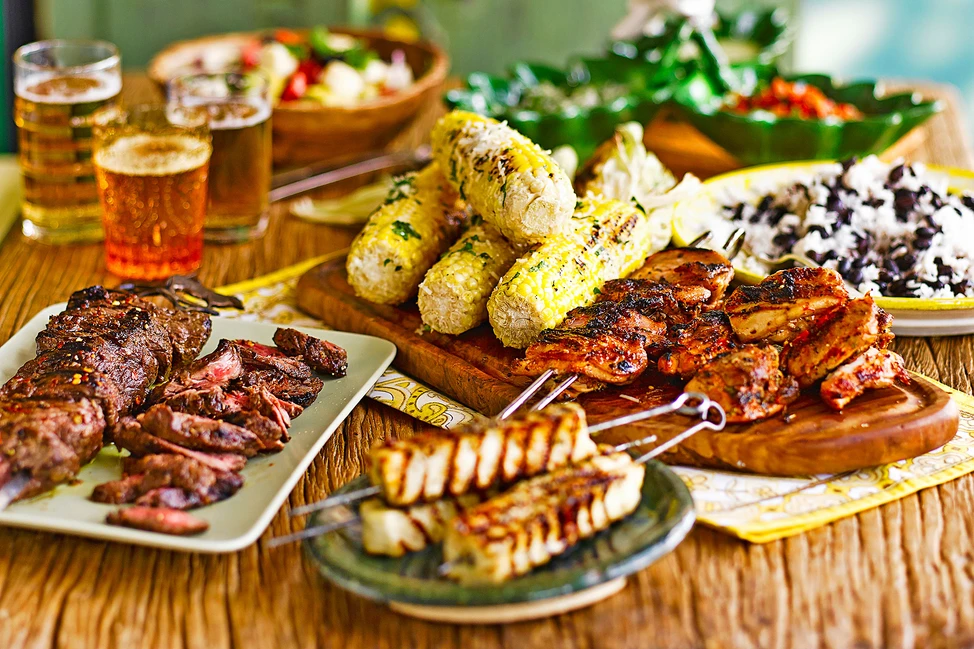Discover the rich and vibrant flavors of Brazil with this comprehensive guide to the country’s must-try foods. As a melting pot of indigenous, African, and Portuguese influences, Brazilian cuisine offers a tantalizing array of tastes that are as diverse as its landscape. From the bustling streets of São Paulo to the picturesque beaches of Rio de Janeiro, each region boasts its own culinary specialties that promise a unique gastronomic journey. Whether you are a seasoned traveler or a curious foodie, this guide ensures you won’t miss out on the best dishes Brazil has to offer.
The Staple: Feijoada
Feijoada is often considered the national dish of Brazil and is a must-try for anyone visiting the country. This hearty stew is typically made from black beans cooked with a variety of salted and smoked meats, such as pork, beef, or sausages, and is flavored with garlic, onions, and bay leaves. Served with rice, collard greens, orange slices, and farofa (toasted cassava flour mixture), it offers a perfect example of the fusion of different cultural influences in Brazilian cuisine.
The origins of Feijoada trace back to the times of slavery, when slaves would prepare a filling meal with the leftovers from their masters’ tables. Today, this dish is enjoyed by all layers of society, especially on weekends when families gather to savor this slow-cooked meal. It is not only a culinary experience but also an opportunity to partake in a deeply rooted Brazilian tradition.
For those looking to try Feijoada at its best, it’s recommended to visit a local feijoada restaurant or join a Brazilian family on a Saturday for the traditional weekly feast. Pair it with a caipirinha, Brazil’s national cocktail, for a truly authentic experience.
Street Food Delights: Acarajé and Pastel
Acarajé: The Afro-Brazilian Specialty
Acarajé is a popular street food in Brazil, especially in the state of Bahia. Made from peeled black-eyed peas formed into a ball and then deep-fried in dendê (palm oil), these fritters are typically filled with vatapá (a spicy paste made from shrimp, bread, ground peanuts, and palm oil) and caruru (okra with ground cashews and palm oil). Acarajé serves as a vibrant example of the African influence on Brazilian cuisine and is a must-try for anyone visiting Bahia.
The dish is usually served wrapped in a leaf with a portion of hot pepper sauce on the side. Eating Acarajé is not only a treat for the palate but also an experience of the Afro-Brazilian culture that permeates the streets of Salvador, the heart of Bahian culture. The best places to try Acarajé are the bustling street markets where they are made fresh and served piping hot.
Acarajé can be enjoyed throughout the day but is most commonly eaten in the late afternoon or early evening. It is a staple during the Bahian carnaval and other local festivals, providing energy to keep the festivities going.
Pastel: A Crispy Treat
Pastel are crispy pastries that are a common sight at street markets across Brazil. These thin crust pies can be filled with a variety of ingredients, but the most popular fillings include ground meat, cheese, or hearts of palm. Each pastel is deep-fried until golden and served hot, often accompanied by a wedge of lime to be squeezed over the top before eating.
This simple yet delicious snack reflects the more casual side of Brazilian cuisine and is perfect for a quick bite on the go. Whether you’re exploring a local market or just looking for a fast meal, Pastel offers a taste of Brazilian flavor that is sure to satisfy. The versatility of the fillings also means that there is something for everyone, making it a universally loved dish.
Pastel’s origins are a bit of a mystery, but it is believed to have been influenced by Chinese and Japanese immigrants who adapted their traditional recipes to Brazilian ingredients. Today, these savory snacks are firmly embedded in the culinary landscape of Brazil and are a must-try for any visitor.
Brazilian Food: Barbecue Churrasco
Churrasco is a term for Brazilian barbecue, a staple in Brazilian culture known for its delicious meats and communal dining style. This cooking style is a testament to the gaucho (South American cowboy) traditions of southern Brazil, particularly in the state of Rio Grande do Sul. Various cuts of beef, pork, lamb, and chicken are grilled over open flames to perfection and served with chimichurri, a sauce made from herbs, garlic, vinegar, and oil.
Beyond the traditional meats, Brazilian churrasco also includes grilled halloumi cheese, pineapple, and sausages, making it a meal that has something for everyone. The key to a successful churrasco is the gauchos’ technique of skewering and slow-roasting the meat to ensure it is juicy and tender. Typically, it is enjoyed in a setting known as a churrascaria, where diners are served various types of meat in succession until they signal they have had enough.
For a truly authentic churrasco experience, visit a local churrascaria. Here, you can enjoy the rhythmic carving of meats at your table and immerse yourself in the lively atmosphere typical of Brazilian steakhouses. Coupled with a traditional caipirinha, it makes for an unforgettable dining experience.
Sweet Treats: Brigadeiros and Pão de Queijo
Brigadeiros: Brazil’s Favorite Dessert
The brigadeiro is a beloved Brazilian dessert that no visitor should miss. These chocolate truffles are made from condensed milk, cocoa powder, butter, and chocolate sprinkles to cover the outside layer. Simple and delicious, brigadeiros are a staple at Brazilian birthdays and other celebrations but are also enjoyed as a sweet treat throughout the year.
Originating in the 1940s, the dessert was named after Brigadier Eduardo Gomes, whose supporters made the sweets to raise funds during his presidential campaign. Although Gomes didn’t win the presidency, his namesake treat won the hearts of many and has become one of Brazil’s most popular desserts.
To experience the best brigadeiros, visit a local confectionery or bakery where they are often made fresh daily. Here, you might also find variations that include nuts, fruits, or flavored chocolates, offering a new twist on this traditional sweet.
Pão de Queijo: Cheesy Bread Bites
Pão de Queijo, or Brazilian cheese bread, is a small, baked cheese roll that is a popular snack and breakfast food in Brazil. Made with tapioca flour, eggs, milk, and cheese, these doughy rolls are delightfully chewy and flavorful. Typically served warm, they make a perfect accompaniment to coffee or tea.
Originating from the Brazilian state of Minas Gerais, the recipe has various adaptations across different regions but remains a beloved part of Brazilian cuisine. Its popularity has spread worldwide, and today Pão de Queijo can be found in many different countries, often served in Brazilian restaurants and bakeries.
For those looking to try genuine Pão de Queijo, it’s recommended to visit a café or bakery that specializes in Brazilian foods. Here, you can enjoy freshly baked cheese bread made with traditional methods and local ingredients.
Key Brazillian Ingredients and Flavors
Brazilian cuisine is marked by a range of flavors and ingredients that are quintessential to its dishes. Some of the key ingredients include cassava (also known as manioc), coconut milk, black beans, palm oil (dendê), and various meats and seafood. These ingredients represent the agricultural diversity of Brazil and are used in countless traditional recipes.
Herbs and spices such as cilantro, pepper, and garlic are also prominent, adding depth and flavor to Brazilian dishes. The use of these ingredients demonstrates the influence of indigenous, African, and European culinary traditions that have shaped Brazilian cuisine over the centuries.
Visitors to Brazil are encouraged to explore the local markets to see these ingredients firsthand. Market visits offer insights into the Brazilian way of life and allow food lovers to gain a deeper appreciation of the country’s culinary practices and innovation.









